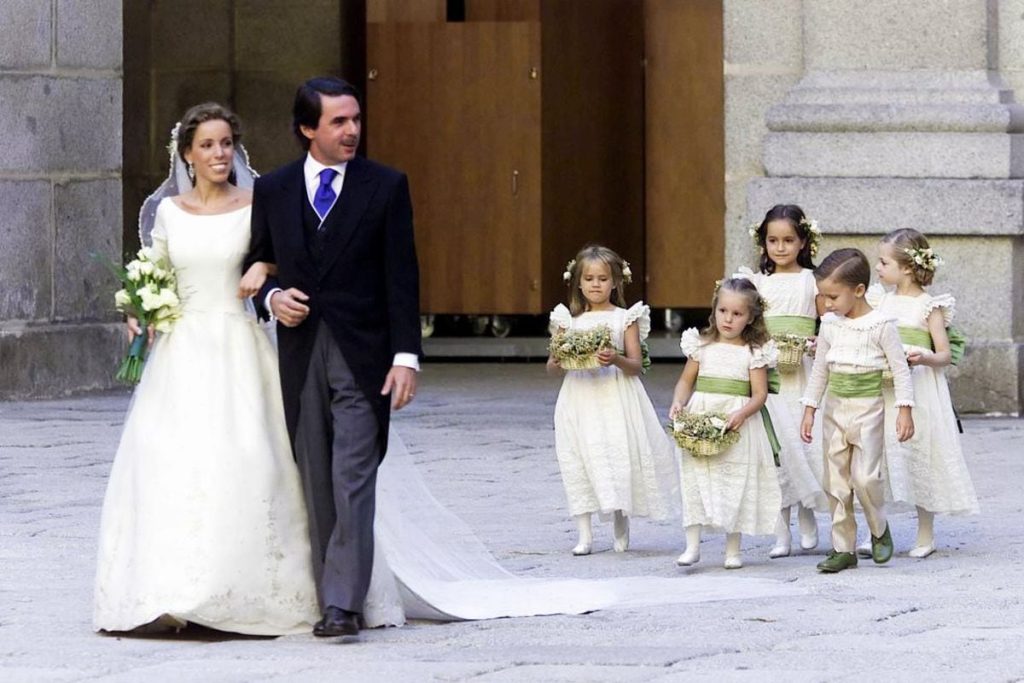The weddings of high society are also an exhibition of an oligarchy that, even if only for a day, emerges from their palaces to show us the faces of power. It is news because power is not easily seen or talked about on a daily basis, as Leila Guerriero explains in Zona de obras. Power resides in silent neighborhoods and gathers in reserved spaces, but on exceptional occasions, an oligarchy reaffirms itself by happily displaying that yes, it is in charge. This has been the case since the Middle Ages. Hence, it is so relevant to be on the guest list that everyone wants to read. On that day and the day after, all media outlets publish luxurious photo galleries where we discover the elegance of those who belong to the elite and those who do not. It is not just gossip; it is a party and something more. It can become a political act when politics intersects with artistry, business, or money. It is the opportunity to learn about the rituals and codes, the places, and the imagery of a privacy characterized by exclusivity.
The most significant wedding that has taken place in 21st century Spain was not the marriage of Felipe VI and Letizia Ortiz. Neither was it the one in the golden mile of the Salamanca district yesterday, although, as the regional TV announcer said, the bride will directly connect the mayor of Madrid with the royal family. Yesterday’s event on Serrano street was beautiful but was just a local spinoff of the original. The most impactful wedding was on September 5, 2002, in a historically significant location like the Monastery of El Escorial. The daughter of the Prime Minister and another mayor of Madrid marrying businessman Alejandro Agag preserved a symbolic dimension that allows us to decipher our present. The most important thing was not whether the heads of a network present there paid for the party’s lights or if we later discovered that some guests were involved in corruption. The crucial aspect was that, beyond marital happiness, that wedding deliberately staged the enthronement of Aznarism: a traditional Spanish oligarchy wanted to show that they had regained their power, connected with international networks of influence, and thanks to the consolidation of a hegemony that, two decades later, has not been replaced. Nor has their discourse been delegitimized. On the contrary, it is largely reinforced by the other oligarchy of democracy, that of ’78, which wants to survive.
These oligarchs remain, and it is not surprising. “The relevant and defining political motivations of oligarchs are defensive and existential,” writes Jeffrey A. Winters in the political science classic Oligarchy, which has just been translated. “Once established, the primary goal of an oligarch is to secure, maintain, and preserve their position of extreme power against all kinds of threats.” For the past few years, one oligarchy has been defending itself. The polarization that characterizes our media and parliamentary debates, the subsidies to the press to make it militant, the lack of honest willingness to renew the judicial elite, or questionable decisions of the courts are explained beyond ideology by an aggressive strategy to defend positions of power. Yesterday, at least, they showed themselves joyfully. Long live the newlyweds!
In conclusion, the weddings of high society serve as a display of power for the elite, offering a glimpse into the inner workings of an oligarchy. These events are not just about gossip but can also hold political significance as different spheres of influence intersect. The staging of these weddings, such as the monumental event at El Escorial in 2002, can symbolize the consolidation and assertion of power by a traditional oligarchy. Despite challenges and criticism, these oligarchs continue to defend and maintain their positions of power through various means. As society evolves, the role and influence of oligarchies in politics and society remain a topic of interest and scrutiny.


